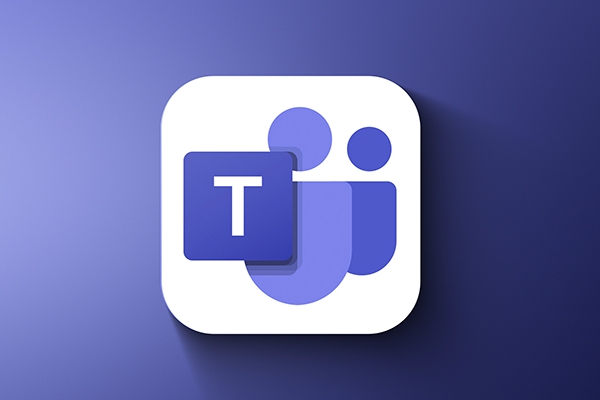Microsoft Teams audio problems can be troubleshooted through the following steps: first check the device settings, make sure that the speaker and microphone are selected correctly and confirm the connection status; secondly, after exiting the meeting, test the audio function on the main interface to determine the source of the problem; finally troubleshoot system permissions, update the driver, replace the socket, or contact IT support to solve the "no audio input/output" problem. Step-by-step operations in sequence can usually effectively resolve common audio failures.

Sometimes when you have a meeting in Microsoft Teams, you suddenly find that you can't make a sound, you can't hear others' words, or you can't hear others' words, which is really a headache. Although these problems are not fatal, they affect efficiency when they encounter them. In fact, many common audio problems are not difficult to solve. The key is to know where to start.

Check whether the device is set correctly
Teams' audio problems are often because the device is not selected correctly. You can check this way:

- Open Teams, click on the avatar in the upper right corner → Settings → Devices
- Make sure that both the "speaker" and "microphone" are selected as the device you want to use (such as external headphones or the microphone that comes with your computer)
Sometimes the system default device has changed, but Teams still uses the old configuration. At this time, manually switching can solve the problem. If you use Bluetooth headsets, remember to confirm the connection status and the volume is not muted.
Exit the meeting before testing the audio
If you test the audio in a meeting, you may be heard by others. It is recommended to exit the meeting first and then perform the following operations:

- Click "Test hearing and microphone" on the Teams main interface
- It will automatically play a prompt to see if it can be heard normally
- Say something to the microphone, the software will detect whether there is an input signal
This test function can quickly determine whether the problem lies in the microphone or speaker. If you don't have a sound while testing, the problem may not be in Teams itself, but in the system-level setup or driver issue.
Don't rush to restart when encountering "no audio input/output"
Sometimes after opening the test page, Teams displays "Microphone not detected" or "Sound cannot be played", so don't rush to restart the software or computer. You can try these steps:
- Make sure the system permissions allow Teams to use the microphone: Go to Windows Settings → Privacy → Microphone, make sure the switch is on
- Update or reinstall the audio driver (especially when using a laptop external device)
- Try replacing the USB socket to troubleshoot hardware compatibility issues
- If it is a company computer, there may be a group policy that restricts audio access. Contact IT support is more effective
Sometimes it is a problem with Windows itself, not Teams's, so the troubleshooting starts with the basics.
Basically, these common investigation directions. The audio problem seems complicated, but most of the time it is because the device is not selected correctly, the permissions are not enabled, or the driver is a little problem. It can be done step by step in order.
The above is the detailed content of How to fix audio issues in Microsoft Teams?. For more information, please follow other related articles on the PHP Chinese website!

Hot AI Tools

Undress AI Tool
Undress images for free

Undresser.AI Undress
AI-powered app for creating realistic nude photos

AI Clothes Remover
Online AI tool for removing clothes from photos.

Clothoff.io
AI clothes remover

Video Face Swap
Swap faces in any video effortlessly with our completely free AI face swap tool!

Hot Article

Hot Tools

Notepad++7.3.1
Easy-to-use and free code editor

SublimeText3 Chinese version
Chinese version, very easy to use

Zend Studio 13.0.1
Powerful PHP integrated development environment

Dreamweaver CS6
Visual web development tools

SublimeText3 Mac version
God-level code editing software (SublimeText3)

Hot Topics
 How to Use Parentheses, Square Brackets, and Curly Braces in Microsoft Excel
Jun 19, 2025 am 03:03 AM
How to Use Parentheses, Square Brackets, and Curly Braces in Microsoft Excel
Jun 19, 2025 am 03:03 AM
Quick Links Parentheses: Controlling the Order of Opera
 Outlook Quick Access Toolbar: customize, move, hide and show
Jun 18, 2025 am 11:01 AM
Outlook Quick Access Toolbar: customize, move, hide and show
Jun 18, 2025 am 11:01 AM
This guide will walk you through how to customize, move, hide, and show the Quick Access Toolbar, helping you shape your Outlook workspace to fit your daily routine and preferences. The Quick Access Toolbar in Microsoft Outlook is a usefu
 Google Sheets IMPORTRANGE: The Complete Guide
Jun 18, 2025 am 09:54 AM
Google Sheets IMPORTRANGE: The Complete Guide
Jun 18, 2025 am 09:54 AM
Ever played the "just one quick copy-paste" game with Google Sheets... and lost an hour of your life? What starts as a simple data transfer quickly snowballs into a nightmare when working with dynamic information. Those "quick fixes&qu
 Don't Ignore the Power of F9 in Microsoft Excel
Jun 21, 2025 am 06:23 AM
Don't Ignore the Power of F9 in Microsoft Excel
Jun 21, 2025 am 06:23 AM
Quick LinksRecalculating Formulas in Manual Calculation ModeDebugging Complex FormulasMinimizing the Excel WindowMicrosoft Excel has so many keyboard shortcuts that it can sometimes be difficult to remember the most useful. One of the most overlooked
 6 Cool Right-Click Tricks in Microsoft Excel
Jun 24, 2025 am 12:55 AM
6 Cool Right-Click Tricks in Microsoft Excel
Jun 24, 2025 am 12:55 AM
Quick Links Copy, Move, and Link Cell Elements
 Prove Your Real-World Microsoft Excel Skills With the How-To Geek Test (Advanced)
Jun 17, 2025 pm 02:44 PM
Prove Your Real-World Microsoft Excel Skills With the How-To Geek Test (Advanced)
Jun 17, 2025 pm 02:44 PM
Whether you've recently taken a Microsoft Excel course or you want to verify that your knowledge of the program is current, try out the How-To Geek Advanced Excel Test and find out how well you do!This is the third in a three-part series. The first i
 How to recover unsaved Word document
Jun 27, 2025 am 11:36 AM
How to recover unsaved Word document
Jun 27, 2025 am 11:36 AM
1. Check the automatic recovery folder, open "Recover Unsaved Documents" in Word or enter the C:\Users\Users\Username\AppData\Roaming\Microsoft\Word path to find the .asd ending file; 2. Find temporary files or use OneDrive historical version, enter ~$ file name.docx in the original directory to see if it exists or log in to OneDrive to view the version history; 3. Use Windows' "Previous Versions" function or third-party tools such as Recuva and EaseUS to scan and restore and completely delete files. The above methods can improve the recovery success rate, but you need to operate as soon as possible and avoid writing new data. Automatic saving, regular saving or cloud use should be enabled
 5 New Microsoft Excel Features to Try in July 2025
Jul 02, 2025 am 03:02 AM
5 New Microsoft Excel Features to Try in July 2025
Jul 02, 2025 am 03:02 AM
Quick Links Let Copilot Determine Which Table to Manipu






